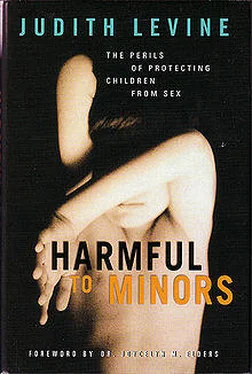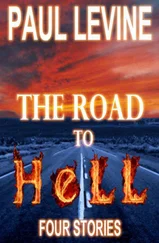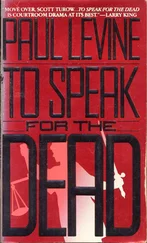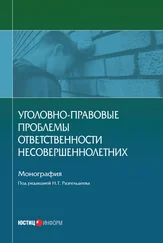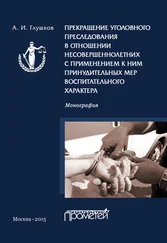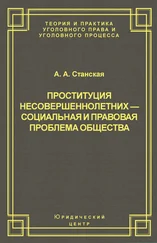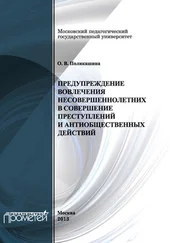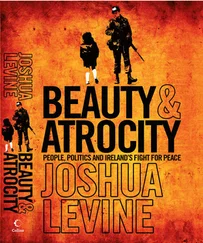Judith Levine - Вредно для несовершеннолетних
Здесь есть возможность читать онлайн «Judith Levine - Вредно для несовершеннолетних» весь текст электронной книги совершенно бесплатно (целиком полную версию без сокращений). В некоторых случаях можно слушать аудио, скачать через торрент в формате fb2 и присутствует краткое содержание. Жанр: Публицистика, на русском языке. Описание произведения, (предисловие) а так же отзывы посетителей доступны на портале библиотеки ЛибКат.
- Название:Вредно для несовершеннолетних
- Автор:
- Жанр:
- Год:неизвестен
- ISBN:нет данных
- Рейтинг книги:5 / 5. Голосов: 1
-
Избранное:Добавить в избранное
- Отзывы:
-
Ваша оценка:
- 100
- 1
- 2
- 3
- 4
- 5
Вредно для несовершеннолетних: краткое содержание, описание и аннотация
Предлагаем к чтению аннотацию, описание, краткое содержание или предисловие (зависит от того, что написал сам автор книги «Вредно для несовершеннолетних»). Если вы не нашли необходимую информацию о книге — напишите в комментариях, мы постараемся отыскать её.
Вредно для несовершеннолетних — читать онлайн бесплатно полную книгу (весь текст) целиком
Ниже представлен текст книги, разбитый по страницам. Система сохранения места последней прочитанной страницы, позволяет с удобством читать онлайн бесплатно книгу «Вредно для несовершеннолетних», без необходимости каждый раз заново искать на чём Вы остановились. Поставьте закладку, и сможете в любой момент перейти на страницу, на которой закончили чтение.
Интервал:
Закладка:
25. Friedrich and Grambsch, "Child Sexual Behavior Inventory."
26. Robin L. Leavitt and Martha Bauman Power, "Civilizing Bodies: Children in Day Care," in Making a Place for Pleasure in Early Childhood Education , ed. Tobin, 39-75.
27. Leavitt and Power, "Civilizing Bodies," 45-46.
28. Peggy Brick, Sue Montford, and Nancy Blume, Healthy Foundations: The Teacher's Book (Hackensack, N.J.: Center for Family Life Education/Planned Parenthood of Greater Northern New Jersey, 1993), 2-7.
29. Larry L. Constantine and Floyd M. Martinson, eds., Children and Sex: New Findings, New Perspectives (Boston: Little, Brown, 1981), 30.
30. Nancy Blackman, "Pleasure and Touching: Their Significance in the Development of the Preschool Child," paper delivered at the International Symposium on Childhood and Sexuality, Montreal, September 1979.
31. Outercourse was named, but not invented, in the 1970s. Even before the eighteenth century, when travel was slow and distances long, there was "bundling." "The practice allowed a [courting] couple to spend a night together in bed as long as they remained fully clothed or, in some cases, kept a 'bundling board' between them. . . . Parents and youth shared the expectation that sexual intercourse would not take place, but if it did, and pregnancy resulted, the couple would certainly marry." John D'Emilio and Estelle B. Freedman, Intimate Matters: A History of Sexuality in America (New York: Harper and Row, 1988), 22.
32. Marty Klein and Riki Robbins, Let Me Count the Ways: Discovering Great Sex without Intercourse (New York: Jeremy P. Tarcher/Putnam, 1998), 125.
33. Leonore Tiefer, "Bring Back the Kids' Stuff," in Sex Is Not a Natural Act , 71. Note from a detractor who read this chapter: "This strikes me as a crock, remembering instances of petting with strangers. ..."
34. Tiefer, "Bring Back the Kids' Stuff," 70.
35. Advocates for Youth, "Adolescent Sexual Health in Europe and the U.S." (2001). 36. Klein and Robbins, Let Me Count the Ways .
11. Community
1. Patton, Fatal Advice , 34. Patton was not the only one to indict abstinence education as a killer. In 1997, the International AIDS Conference proclaimed that the abstinence-only "approach place[d] policy in direct conflict with science and ignore[d] overwhelming evidence that other programs would be effective." In the face of a worldwide health crisis, conferees strongly suggested, teaching "just say no" was worse than a waste of public resources. It was lethal.
2. Half of the forty thousand new HIV infections a year are in people under twenty-five, according to estimates from the Centers for Disease Control and the National Institutes of Health. Bill Alexander, "Adolescent HIV Rates Soar; Government Piddles," Youth Today (March/April 1997): 29.
3. They were down 44 percent in the first six months of 1997 compared with 1996. Altman, "AIDS Deaths Drop 48% in New York."
4. Hilts, "AIDS Deaths Continue to Rise in 25-44 Age Group."
5. Including those who inject drugs, the numbers fell from 65 percent in 1981 to 44 percent in 1996. Centers for Disease Control, Atlanta, Ga., March 1996.
6. Interview with Gary Remafedi, director of the University of Minnesota/Minneapolis Youth and AIDS Project, 1998.
7. "Rate of AIDS Has Slowed," New York Times , April 25, 1998, A9. African Americans make up half of new HIV infections and 40 percent of full-blown AIDS cases. Doug Ireland, "Silence Kills Blacks," Nation (April 20, 1998): 6. Poor neighborhoods, where almost everybody knows somebody with the disease, are being ravaged. In the South Bronx, for instance, AIDS is the leading cause of death in children (interview with GMHC spokesman, 1999).
8. Altman, "Study in 6 Cities Finds HIV in 30% of Young Black Gays."
9. Cherrie B. Boyer and Susan M. Kegeles, "AIDS Risk and Prevention among Adolescents," Social Science Medicine 33, no. 1 (1991): 11-23.
10. New York City Health Department, phone interview, April 1999.
11. Barbara Crossette, "In India and Africa, Women's Low Status Worsens Their Risk of AIDS," New York Times , February 26, 2001.
12. B. R. Simon Rossner, "New Directions in HIV Prevention," SIECUS Report 26 (December 1997/January 1998): 6.
13. Governments of developing countries have won some concessions from the major pharmaceutical companies, but many observers believe these are too little, too late.
14. The following remarks from people in the Twin Cities came from interviews that I conducted during my visit there in 1998.
15. District 202 Youth Survey (Minneapolis, 1997).
16. District 202 Youth Survey .
17. Marsha S. Sturdevant and Gary Remafedi, "Special Health Needs of Homosexual Youth," in Adolescent Medicine: State of the Art Reviews (Philadelphia: Hanley and Belfus, 1992), 364. The authors cite a study of male prostitutes and other delinquent young men that found that 70 percent of the former group considered themselves gay or bisexual compared with only 4 percent of the latter. D. Boyer, "Male Prostitution and Homosexual Identity," Journal of Homosexuality 15 (1989): 151.
18. R. Stall and J. Wiley, "A Comparison of Alcohol and Drug Use Patterns of Homosexual and Heterosexual Men: The San Francisco Men's Health study," Drug and Alcohol Dependence 22 (1988): 63-73.
19. "Although there is a significant relationship between substance use and high risk sexual activity, substance use does not cause sexual risk taking," according to a compilation of research by Advocates for Youth. "At-risk teens tend to engage in several inter-related high risk behaviors at once." Marina McNamara, "Adolescent Behavior: II. Socio-Psychological Factors," Advocates for Youth fact sheet, Washington, D.C., September 1997.
20. Studies suggest that as many as 35 percent of young gay males and 30 percent of lesbians have considered or tried suicide. Alan Bell and Martin Weinberg, Homosexualities (New York: Simon and Schuster, 1978). As for kids who succeed in self-annihilation, the 1989 U.S. Department of Health and Human Services Task Force on Youth Suicide reported that 30 percent may be gay.
21. Gary Remafedi, Michael Resnick, Robert Blum, and Linda Harris, "Demography of Sexual Orientation in Adolescents," Pediatrics 89, no. 4 (April 1992).
22. Patton, Fatal Advice .
23. U.S. Conference of Mayors, "Safer Sex Relapse: A Contemporary Challenge," AIDS Information Exchange 11, no. 4 (1994): 1-8.
24. Altman, "Study in 6 Cities."
25. D. Boyer, "Male Prostitution and Homosexual Identity," Journal of Homosexuality 9 (1984): 105.
26. In one study of New York kids selling sex on the street, only 36 percent of respondents had failed to protect themselves in the last encounter. S. L. Bailey et al., "Substance Use and Risky Sexual Behavior among Homeless and Runaway Youth," Journal of Adolescent Health 23 (December 1998): 378-88.
27. Amy Bracken, "STDs Discriminate," Youth Today (March 2001): 7-8.
28. Minnesota's Youth without Homes (St. Paul: Wilder Research Center, 1997), 5.
29. Ine Vanwesenbeeck, "The Context of Women's Power(lessness) in Heterosexual Interactions," in New Sexual Agendas , ed. Lynne Segal (New York: New York University Press, 1997), 173. A 1998 study of homeless youth, however, found that only 36 percent of respondents, who were mostly female, did not use a condom with a casual partner, and the less-well-known a partner was, the more likely they were to use a condom. S. L. Bailey et al., "Substance Use and Risky Sexual Behavior."
30. Author interview, New York, 1999.
31. E. Matinka-Tyndale, "Sexual Scripts and AIDS Prevention: Variations in Adherence to Safer Sex Guidelines in Heterosexual Adolescents," Journal of Sex Research 28 (1991): 45-66; S. J. Misovich, J. D. Fisher, and W. A. Fisher, "The Perceived AIDS-Preventive Utility of Knowing One's Partner Well: A Public Health Dictum and Individuals' Risky Sexual Behaviour," Canadian Journal of Human Sexuality 5 (1996): 83-90; Linda Feldman, Philippa Holowaty, et al., "A Comparison of the Demographic, Lifestyle, and Sexual Behaviour Characteristics of Virgin and Non-Virgin Adolescents," Canadian Journal of Human Sexuality 6, no 3. (fall 1997): 197-209.
Читать дальшеИнтервал:
Закладка:
Похожие книги на «Вредно для несовершеннолетних»
Представляем Вашему вниманию похожие книги на «Вредно для несовершеннолетних» списком для выбора. Мы отобрали схожую по названию и смыслу литературу в надежде предоставить читателям больше вариантов отыскать новые, интересные, ещё непрочитанные произведения.
Обсуждение, отзывы о книге «Вредно для несовершеннолетних» и просто собственные мнения читателей. Оставьте ваши комментарии, напишите, что Вы думаете о произведении, его смысле или главных героях. Укажите что конкретно понравилось, а что нет, и почему Вы так считаете.
